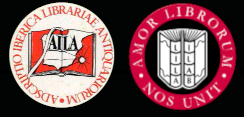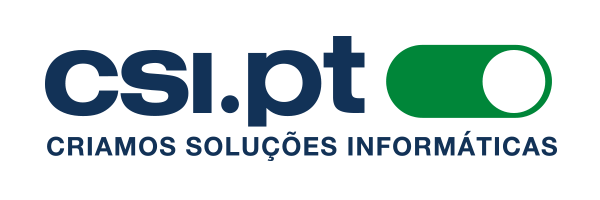


Home |
Temáticas |
Catálogos |
Pedidos |
  |  |
|||||||
|

|
RUGENDAS. (Johann Moritz) HABITANTE DE GOYAS, QUADRO A ÓLEO PINTADO SOBRE MADEIRA. |
|
|
Clique nas imagens para aumentar. PERIER. (Alexandre) DESENGANO DOS PECCADORES.Necessario a todo genero de pessoas, utilissimo aos missionarios, e aos Prégadores desenganados, que só desejão a salvação das Almas. Dedicado Ao Sereníssimo Senhor D. MANOEL, Infante de Portugal. Escrito pelo R.P. ALEXANDRE PERIER Da Companhia de Jesus, e Missionario da Província do Brasil, Accrescentado com Huma Addiçam de hum caso horrivel nesta terceira Impressão, Por LOURENÇO MORGANTI, Bibliothecario do Illustrissimo, e Reverendissimo Senhor Patriarch I. de Lisboa Occidental. Lisboa Occidental, Na Officina de Antonio Pedrozo Galram. M. DCC. XXXV. [1735] Com as licenças necessarias, e Privilegio Real. In 8º gr. de 20,2x14,8 cm. Com [xxii de (24)]; 458 págs. Encadernação da época, inteira de pele, com rótulo, nervos e ferros a ouro em casas fechadas na lombada. Cortes das folhas carminados. Ilustrado com 17 magníficas gravuras de grande originalidade abertas em chapa de metal. Incluem 1 anterrosto gravado com motivos alegóricos da autoria de Debrie, com a data de 1735, uma gravura com as armas do Infante D. Manuel da autoria de Vieira Lusitano, mais 14 gravuras no início de cada discurso, em que as três primeiras são de Debrie e as restantes serão, segundo Ernesto Soares, da autoria de J. Matheo, que assina 3 delas; por última apresenta mais uma gravura, do mesmo autor, no início de um texto adicional. Segundo Ernesto Soares (n.º 361, p. 139), Le Bouteaux, realizou uma gravura para servir de anterrosto alegórico desta obra, mas que nunca chegou a ser usada por motivos desconhecidos, sendo substituída pela de Debrie. As primeiras 4 gravuras da 1.ª edição, Roma, 1724, são muito semelhantes, mas não estão assinadas. As de Debrie feitas para esta edição são muito mais perfeitas e pormenorizadas. Impressão nítida ornamentada com cabeções, na dedicatória com as armas reais de Portugal e no início de cada discurso com motivos decorativos, com iniciais decoradas e com belos florões de remate de apreciáveis dimensões no fim de quase todos os discursos. Exemplar com Ex libris de Abel de Andrade, no interior da encadernação, com assinatura de posse coeva "De Manuel [...?]", no verso do anterrosto gravado e com assinatura de posse coeva de Maria de Jesus Ana de Veríssimo da Rocha Soares, seguida de forma de maldição a quem não devolver o livro: «quem lho achar e lho não quizer dar ao inferno o hirá pagar». Com falta da folha de rosto [para esta ficha catalográfica transcrevemos a folha de rosto do exemplar da Perkins Library, Duke University] e da última folha que contém as últimas letras (T, U, V, Z) do índice. Com pequenos picos de traça junto ao festo em especial no pé das folhas. Folhas iniciais quase soltas e pequenos rasgões marginais nas gravuras dos 2.º e 7.º discursos. As páginas preliminares contêm uma extensa dedicatória de Lourenço Morganti ao Infante D. Manuel, irmão do rei D. João V, Ao pio leitor e Introdução ao livro, os dois textos da autoria de Perier, as licenças, datadas de 1 de Fevereiro a 22 de Agosto de 1735, com a aprovação de Frei Filipe da Conceição e o índice dos discursos que compõem a obra. No final da página 441 a 446 contêm um texto adicional próprio desta edição com uma história sobre o vício do jogo e o índice desde a página 447 ao fim. 3.ª edição raríssima, desta obra da Brasiliana, pouco conhecida e estudada, que foi proíbida e mandada destruir por editais da Real Mesa Censória em 1771, e da qual existem cinco edições de 1724, 1726 (tradução para italiano feita pelo próprio autor) 1735, 1752 e 1765. Inocêncio só descreve a 1.ª edição de Roma, 1724. Livro de grande importância, para o estudo do governo do Marquês de Pombal, para a história da gravura em Portugal, das técnicas de catequização da Companhia de Jesus, das missões no Brasil e da censura em Portugal. As gravuras são imprescindíveis para estudar a arte da gravura e em especial do célebre gravador Debrie, que foi autor de grande número de ilustrações no estilo elegante e gracioso da época, demonstrando nestas gravuras a sua capacidade para adaptar o seu estilo à realização de obras com características pré-românticas. Desengano dos Peccadores é um livro de devoção semelhante a muitos outros publicados naquela época, contendo veementes descrições do Inferno com as quais ameaça os pecadores, descrevendo os tormentos que os esperavam no Inferno e citando os escritos de todos os Santos da Igreja e dos Evangelistas. Perier considera-o necessário para todos os tipos de pessoas e muito útil aos missionários. O que distingue esta obra de outros livros de devoção é estar ilustrado com gravuras de grande qualidade, representando os tormentos dos pecadores no inferno. O Padre Perier escreve, na introdução, que quando se encontrava no Brasil levava sempre consigo gravuras aclaradas pela cor do fogo – que representavam o Inferno e que ele mostrava aos índios com grande sucesso. O efeito que causavam era tão forte que ele resolveu ilustrar a sua obra com algumas delas. Essas gravuras são de facto horripilantes. Retratam entidades maléficas deformadas e pavorosos monstros atormentando os pecadores no meio do fogo dos infernos. As gravuras constituem uma das maiores curiosidades do livro. Já foi levantada a hipótese da proibição do Desengano de Peccadores, além do facto do seu autor ser jesuíta, se dever a influências dos grandes proprietários do Brasil, pelo facto de o autor defender, na parte 10ª da obra, que os proprietários de escravos cometiam grandes pecados e serão atormentados para sempre no inferno. A Real Mesa Censória foi criada, por Carta de Lei de 5 de Abril de 1768, integrada na política de concentração de poderes e de regalismo que caracterizaram a acção do Marquês de Pombal. Esta instituição de censura Pombalina já tinha proibido a obra por edital de 22 de Abril de 1771 e renovou a proibição no mesmo ano por Edital de 10 de Junho, que inclui outras obras. A proibição destas obras religiosas devia-se ao facto de não estarem conforme as tendências de origem francesa e iluminista de racionalismo estreito e antirreligioso, que caracterizavam o Portugal Pombalino. Na verdade, elas não tinham qualquer erro ou desvio da doutrina, pois tinham sido todas aprovadas pela Inquisição e pelos Bispos, nas datas em que foram publicadas. Alexandre Perier (Turim 1651-1736) Padre da Companhia de Jesus foi durante décadas missionário no Brasil. A sua entrada para a Companhia de Jesus ocorreu em 31 de Setembro de 1668 e a profissão solene, já no Brasil, em 15 de Agosto de 1686 (Rodrigues, V, 1945, 581). Durante a sua estada nos trópicos, foi superior dos colégios de Cabo Frio e da Paraíba e Procurador das Missões. Perier, retornou para a Itália em 1715. Inocêncio 1, 39, VIII, 41, descreve a edição de 1724 e a refere a 2ª edição. Monteverde 4114. Manuel dos Santos, Catálogo, 1927, n.º 1802 (só com gravura alegórica, com falta das outras). Padre Manuel Rodrigues - História da Companhia de Jesus no Brasil, Rio, 1950, IV, IX. Catálogo n.º 4, do Mundo do Livro, Lisboa, 1964, n. 3318. Borba de Moraes. Bibliogr. Bras. 2, 660. Ernesto Soares. História da Gravura Artística em Portugal. Vol. I, nº 639, pág. 211. Palmira Morais Rocha de Almeida - Dicionário de autores no Brasil colonial, Colibri, 2010, p. 412.
Illustrated with 17 magnificent engravings etched in metal plate. They include an engraving with allegorical motifs by Debrie, dated 1735, an engraving with the arms of Prince Manuel by Vieira Lusitano, plus 14 engravings at the beginning of each discourse, the first three by Debrie and the rest, according to Ernesto Soares, by J. Matheo, who signs 3 of them; lastly, there is another engraving by the same author at the beginning of an additional text. According to Ernesto Soares (no. 361, p. 139), Le Bouteaux produced an engraving to serve as an allegorical foretaste of this work, but it was never used for unknown reasons and was replaced by Debrie"s. The first four engravings in the first edition, Rome, 1724, are very similar, but they are not signed. The ones from Debrie made for this edition are much more perfect and detailed. Clear printing decorated with headpieces, the dedication with the royal arms of Portugal and the beginning of each speech with decorative motifs, decorated initials and beautiful fleurons of considerable size at the end of almost all the speeches. Copy with Ex libris from Abel de Andrade, in the front pastedown, with coeval handwritten ownership title "De Manuel [...?]", on the back of the engraved obverse and with coeval handwritten ownership titlee of Maria de Jesus Ana de Veríssimo da Rocha Soares, followed by a form of curse to those who do not return the book: 'whoever finds it and does not want to give it to hell will pay for it'. Lacking the title page [for this catalogue card we have transcribed the title page of the copy from Perkins Library, Duke University] and the last page containing the last letters (T, U, V, Z) of the table of contents. With small moth spots near the festoon, especially at the foot of the leaves. Initial leaves almost loose and small marginal tears in the engravings of the 2nd and 7th discourses. The preliminary pages contain an extensive dedication by Lourenço Morganti to Prince Manuel, brother of King João V, to the pious reader and Introduction to the book, the two texts by Perier, the licences, dated from 1 February to 22 August 1735, with the approval of Friar Filipe da Conceição and the index of the speeches that make up the work. At the bottom of pages 441 to 446 there is an additional text specific to this edition with a story about the vice of gambling and the index from page 447 to the end. 3rd very rare edition of this work of Brasiliana, little known and studied, which was banned and ordered destroyed by edict of the Royal Censorial Board in 1771, and of which there are five editions of 1724, 1726 (Italian translation by the author himself) 1735, 1752 and 1765. Inocêncio only describes the 1st edition of Rome, 1724. A book of great importance, for the study of the government of the Marquis of Pombal, for the history of engraving in Portugal, the catechisation techniques of the Society of Jesus, the missions in Brazil and censorship in Portugal. The engravings are indispensable for studying the art of engraving and in particular the famous engraver Debrie, who was the author of a large number of illustrations in the elegant and graceful style of the time, demonstrating in these engravings his ability to adapt his style to the realisation of works with pre-romantic characteristics. Desengano dos Peccadores is a devotional book similar to many others published at that time, containing vehement descriptions of Hell with which it threatens sinners, describing the torments that awaited them in Hell and quoting the writings of all the Saints of the Church and the Evangelists. Perier considers it necessary for all kinds of people and very useful for missionaries. What distinguishes this work from other devotional books is that it is illustrated with high-quality engravings depicting the torments of sinners in hell. Father Perier writes in the introduction that when he was in Brazil, he always took with him engravings - brightened by the colour of fire - which represented Hell and which he showed to the Indians with great success. The effect they had was so strong that he decided to illustrate his work with some of them. These engravings are indeed horrifying. They depict deformed evil entities and terrifying monsters tormenting sinners in the midst of hellfire. The engravings are one of the book"s greatest curiosities. It has already been hypothesised that the prohibition of Desengano de Peccadores, apart from the fact that its author was a Jesuit, was due to influences from the big landowners of Brazil, due to the fact that the author argues, in part 10 of the work, that slave owners committed great sins and will be tormented forever in hell. The Royal Board of Censors was created through legal charter on 5 April 1768, as part of the policy of concentrating powers and regalism that characterised the actions of the Marquis of Pombal. This Pombaline censorship institution had already banned the work by edict of 22 April 1771 and renewed the ban the same year by edict of 10 June, which included other works. The ban on these religious works was due to the fact that they did not conform to the French and Enlightenment trends of narrow, anti-religious rationalism that characterised Pombaline Portugal. In fact, they did not contain any errors or deviations from doctrine, since they had all been approved by the Inquisition and the Bishops on the dates they were published. Alexandre Perier (Turin 1651-1736) Father of the Society of Jesus was a missionary in Brazil for decades. He joined the Society of Jesus on 31 September 1668 and made his solemn profession in Brazil on 15 August 1686 (Rodrigues, V, 1945, 581). During his stay in the tropics, he was superior of the colleges of Cabo Frio and Paraíba and Procurator of the Missions. Perier returned to Italy in 1715. Referências/References: Inocêncio 1, 39, VIII, 41, descreve a edição de 1724 e a refere a 2ª edição. Referência: 2310PG005
Local: M-3-B-66 Caixa de sugestões A sua opinião é importante para nós. Se encontrou um preço incorrecto, um erro ou um problema técnico nesta página, por favor avise-nos. 
|
Pesquisa Simples




|
||
 |
|||
|